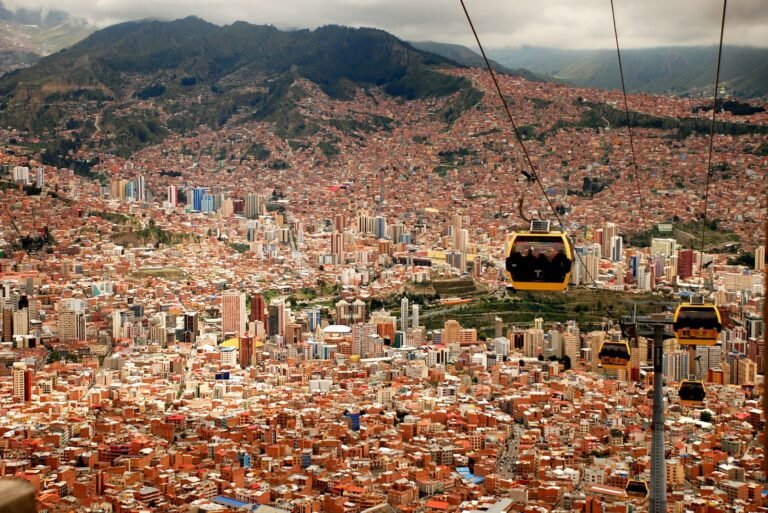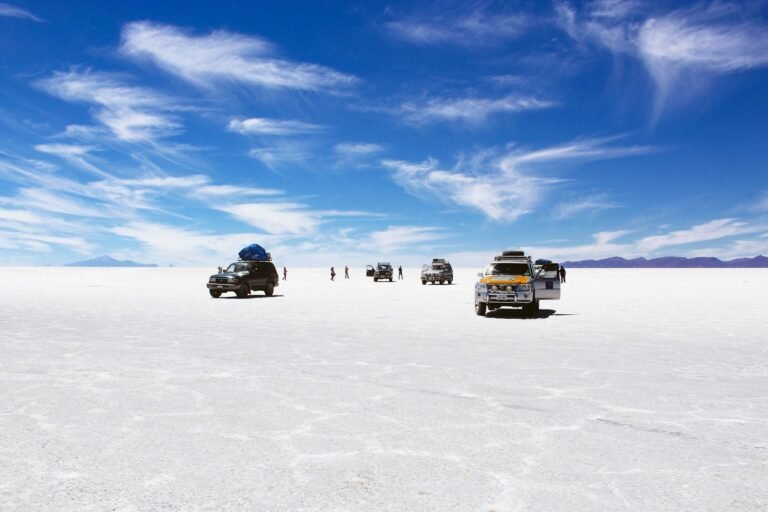Argentina Tour Packages: Unforgettable Adventures
Imagine standing at the edge of the world, where the majestic Andes kiss the sky and the passionate rhythms of tango pulse through the streets. Welcome to Argentina, a land where every corner holds a story, every dish tantalizes the palate, and every sunset paints a new masterpiece. Join us on an unforgettable journey through this vibrant tapestry of culture, nature, and adventure.
Argentina is a country of contrasts—a sprawling canvas painted with diverse landscapes that range from the majestic peaks of Patagonia to the sun-soaked beaches of the Atlantic coast. Here, you can immerse yourself in the fervor of Buenos Aires, where tango dancers fill the plazas, or explore the ancient ruins of indigenous cultures in the northwest. Whether you’re savoring a world-renowned Malbec in Mendoza or hiking through the breathtaking Iguazú Falls, Argentina promises a wealth of unforgettable experiences that linger in your heart long after you leave.
A Land of Wonders
From the windswept pampas to the vibrant streets of urban centers, Argentina’s geography is as varied as its rich history. Stretching over 3,650 kilometers from north to south, the country boasts some of the world’s most breathtaking natural wonders.
The North: Iguazú Falls and Beyond
In the north, the lush subtropical forests cradle the mighty Iguazú Falls, a UNESCO World Heritage site that thunders with the roar of cascading water. As you stand on the walkways that extend over the falls, you’ll be enveloped in a mist that sparkles in the sunlight—a moment that feels almost surreal. The surrounding national park is home to diverse wildlife, including coatis and colorful toucans, making it a paradise for nature lovers.
Salta and Jujuy: Cultural Treasures
Journey west to Salta and Jujuy, where the colorful Hill of Seven Colors and ancient pre-Hispanic settlements await. The region’s indigenous roots are evident in its vibrant culture, music, and art. Don’t miss the opportunity to visit the Quebrada de Humahuaca, a stunning valley recognized as a UNESCO World Heritage site. The mountains’ striking colors and the quaint villages along the route offer a glimpse into Argentina’s indigenous heritage.
The Heartland: Buenos Aires
No visit to Argentina is complete without experiencing Buenos Aires, the pulsating heart of the nation. This vibrant capital is known for its rich cultural scene, tango, and eclectic architecture. Imagine waking up in a bustling neighborhood, the sun filtering through the window as the aroma of freshly baked medialunas (croissants) wafts in from the corner bakery.
Cultural Experiences in Buenos Aires
Stroll through tree-lined streets, greeting friendly neighbors as you sip yerba mate, a traditional drink that embodies connection and community. Spend your afternoon at a local café, savoring the atmosphere while locals gather to share stories and laughter. Take part in workshops that range from tango lessons to traditional crafts. As evening falls, the vibrant nightlife beckons—music spills into the streets, couples dance tango in parks, and friends gather in lively plazas, sharing laughter under the stars.
Mendoza: The Wine Capital
Traveling west, Mendoza awaits with its sprawling vineyards and breathtaking views of the Andes. This region is famous for its Malbec, and a wine tour here is a must. As you sip wine and savor local cuisine, you’ll be surrounded by stunning landscapes—rows of grapevines set against the backdrop of the snow-capped mountains.
Additional Destinations in Mendoza
While Mendoza is known for its wine, consider exploring the nearby Aconcagua Provincial Park, home to South America’s highest peak, Aconcagua. Whether you’re an experienced climber or simply looking to soak in the stunning views, this area offers an array of outdoor activities, including hiking, mountaineering, and horseback riding.
Patagonia: Nature’s Masterpiece
Venturing further south, the breathtaking landscapes of Patagonia await. Here, glaciers, mountains, and turquoise lakes create a natural wonderland. Los Glaciares National Park, a UNESCO World Heritage site, is home to the iconic Perito Moreno Glacier, where you can witness massive icebergs calving into the water below.
Adventure Awaits in Patagonia
For thrill-seekers, Patagonia is a paradise of adventure. Hike the challenging trails of Mount Fitz Roy or embark on ice trekking on the Perito Moreno Glacier. If you prefer the ocean, head to the coastal town of Puerto Madryn, known for its rich marine life, including whales, dolphins, and sea lions. This region is also an excellent spot for snorkeling and diving.
Rich Cultural Tapestry
Argentina’s cultural landscape is as dynamic as its geography. The country’s history is a rich tapestry woven from the threads of indigenous heritage, Spanish colonization, and European immigration. This blend has fostered a unique culture celebrated in its music, dance, and cuisine.
The Tango: A Dance of Passion
The passionate tango, born in the streets of Buenos Aires, captures the essence of the Argentine spirit. To truly appreciate this dance, consider taking a tango class in a local milonga. Feel the rhythm and passion as you learn the steps that tell stories of love and loss, tradition and innovation.
Culinary Delights
Argentine cuisine is a reflection of its diverse culture. Don’t leave without trying the famous parrilla (grill), where cuts of beef are cooked to perfection and served with chimichurri sauce. Sample empanadas, stuffed pastries that vary by region, and are perfect for a quick snack or meal. Savor dulce de leche, a caramel-like treat found in desserts and pastries, and explore local markets for artisanal cheeses and cured meats.
Historical Landmarks and Experiences
Argentina is filled with historical landmarks, each steeped in rich narratives. The Casa Rosada in Buenos Aires, with its striking pink façade, symbolizes Argentine politics and culture. Here, you can learn about the legacy of Evita Perón, whose story continues to resonate in the hearts of many.
Exploring the Provinces
Argentina is a vast and diverse country located in South America, known for its stunning landscapes, rich cultural heritage, and vibrant cities. It is divided into 23 provinces and one autonomous city, Buenos Aires, which serves as the capital. Here’s an overview of each province, highlighting their unique features, cultural significance, and attractions:
1. Buenos Aires
-
Capital: Buenos Aires
-
Overview: The capital city is a cultural melting pot known for its European architecture, tango music, and vibrant nightlife. Key attractions include the historic neighborhood of San Telmo, the colorful Caminito street in La Boca, and the iconic Obelisco.
2. Catamarca
-
Capital: San Fernando del Valle de Catamarca
-
Overview: Known for its stunning mountain landscapes and rich indigenous history, Catamarca offers attractions like the Talampaya National Park and the historic city of Catamarca.
3. Chaco
-
Capital: Resistencia
-
Overview: Characterized by its vast forests and agricultural lands, Chaco is known for its vibrant art scene, particularly in crafts and sculpture. The city of Resistencia is famous for its sculptures and parks.
4. Chubut
-
Capital: Rawson
-
Overview: Home to the stunning landscapes of Patagonia, Chubut features attractions like the Valdés Peninsula, known for its wildlife, and the charming town of Trelew, with its Welsh heritage.
5. Córdoba
-
Capital: Córdoba
-
Overview: Known for its colonial architecture and lively student population, Córdoba offers attractions like the historic Jesuit Block and the Sierras de Córdoba, perfect for hiking and outdoor activities.
6. Corrientes
-
Capital: Corrientes
-
Overview: Located along the banks of the Paraná River, Corrientes is known for its vibrant culture, traditional music, and the beautiful Iberá Wetlands, a haven for wildlife enthusiasts.
7. Entre Ríos
-
Capital: Paraná
-
Overview: Known for its hot springs and agricultural richness, Entre Ríos features beautiful river landscapes and is famous for its mate tea culture. Key attractions include the city of Colón and the Entre Ríos thermal baths.
8. Formosa
-
Capital: Formosa
-
Overview: A province with lush forests and wetlands, Formosa is known for its biodiversity and indigenous cultures. It offers access to the Pilcomayo National Park, rich in wildlife.
9. Jujuy
-
Capital: San Salvador de Jujuy
-
Overview: Known for its dramatic landscapes, including the Quebrada de Humahuaca, a UNESCO World Heritage site, Jujuy is rich in indigenous culture and traditions.
10. La Pampa
-
Capital: Santa Rosa
-
Overview: Characterized by vast plains, La Pampa is known for its agricultural production, particularly beef. The region offers opportunities for rural tourism and gaucho culture.
11. La Rioja
-
Capital: La Rioja
-
Overview: Famous for its wine production, La Rioja is home to stunning landscapes like the Sierra de Famatina and the Talampaya National Park, with its striking red rock formations.
12. Mendoza
-
Capital: Mendoza
-
Overview: Known as the wine capital of Argentina, Mendoza is famous for its Malbec wines and beautiful vineyards. The region offers stunning views of the Andes and outdoor activities like hiking and skiing.
13. Misiones
-
Capital: Posadas
-
Overview: Home to the breathtaking Iguazu Falls, Misiones is known for its lush rainforests and biodiversity. The region also features Jesuit missions and rich indigenous culture.
14. Neuquén
-
Capital: Neuquén
-
Overview: Known for its stunning natural beauty, Neuquén offers attractions like the Nahuel Huapi National Park and the stunning Lake Neuquén, popular for outdoor activities.
15. Río Negro
-
Capital: Viedma
-
Overview: A province with diverse landscapes, Río Negro features the picturesque Lake District, the city of Bariloche known for its chocolate, and the beautiful Nahuel Huapi National Park.
16. Salta
-
Capital: Salta
-
Overview: Known for its colonial architecture and stunning Andean landscapes, Salta offers attractions like the Train to the Clouds and the colorful hills of Purmamarca.
17. San Juan
-
Capital: San Juan
-
Overview: Famous for its wine production and beautiful mountain scenery, San Juan offers attractions like the Ischigualasto Provincial Park, known for its unique rock formations and dinosaur fossils.
18. San Luis
-
Capital: San Luis
-
Overview: Known for its beautiful landscapes and outdoor activities, San Luis features stunning natural parks, including the Sierra de las Quijadas National Park.
19. Santa Cruz
-
Capital: Río Gallegos
-
Overview: A province of rugged beauty, Santa Cruz is known for the Los Glaciares National Park, home to the famous Perito Moreno Glacier and breathtaking landscapes of Patagonia.
20. Santa Fe
-
Capital: Santa Fe
-
Overview: Known for its agricultural production and rich cultural scene, Santa Fe features beautiful rivers, historical sites, and the vibrant city of Rosario, the birthplace of the Argentine flag.
21. Santiago del Estero
-
Capital: Santiago del Estero
-
Overview: The oldest city in Argentina, Santiago del Estero is known for its rich history and cultural traditions, featuring beautiful parks and historic sites.
22. Tierra del Fuego
-
Capital: Ushuaia
-
Overview: Known as the southernmost province in Argentina, Tierra del Fuego features stunning landscapes, including the Beagle Channel, and is a gateway to Antarctica.
23. Tucumán
-
Capital: San Miguel de Tucumán
-
Overview: The smallest province in Argentina, Tucumán is known for its rich history, particularly in the fight for independence. It features beautiful mountains and lush valleys.
Each province offers its own experiences, from the agricultural traditions of Santa Fe to the rugged landscapes of Tierra del Fuego.
Embracing Local Customs! When traveling through Argentina, embrace the local customs. Always greet with a friendly “Hola” and share a kiss on the cheek when meeting someone new. Be mindful of the siesta—many shops may close in the afternoon—so plan your day accordingly. Learning a few words in Spanish will endear you to locals and enhance your experience.
Hidden Gems Await – While the popular spots are must-sees, Argentina is filled with hidden gems that offer unique insights into its culture. Venture to the quaint village of Colonia del Sacramento, a UNESCO World Heritage site known for its cobblestone streets and colonial architecture, nestled on the banks of the Río de la Plata.
In the northwest, discover the stunning Salinas Grandes, vast salt flats that create surreal landscapes, especially during sunrise or sunset. For a more remote experience, the charming town of El Bolsón is a haven for artisans and nature lovers, surrounded by mountains and lush forests, where you can find handmade crafts and delicious local produce at the markets.
Adventure Activities in Argentina
For adventure enthusiasts, Argentina offers a plethora of activities. In Patagonia, explore the glacial lakes and hike the trails of Torres del Paine National Park. In the north, go white-water rafting in the canyons of the Mendoza River or horseback riding through the stunning landscapes of the Andes.
Beaches and Coastal Retreats
If you’re looking for relaxation, the beaches of Mar del Plata and the surf spots of Punta del Este call. Whether you’re a seasoned surfer or a beginner, the waves and vibrant beach culture will leave you rejuvenated.
Best Time to Visit
The best time to visit Argentina varies by region. For those heading to Patagonia, the summer months of December to March offer milder weather and longer days for hiking and exploring. In contrast, spring (September to November) is ideal for visiting Mendoza during the grape harvest, when wine festivals abound.
Buenos Aires is vibrant year-round, but if you want to experience its lively culture, plan your visit during the Buenos Aires International Tango Festival in August or the Feria de Mataderos, a market celebrating traditional Argentine culture, in the fall.
Getting Around Argentina
Getting around Argentina is relatively easy, with options ranging from buses to domestic flights. Long-distance buses in Argentina are comfortable and often come with amenities like meals and Wi-Fi. Always keep some cash on hand, as smaller establishments may not accept credit cards.
Dining and Tipping
When dining, it’s customary to leave a tip of around 10%, and be prepared for a slower dining pace—meals are a time to relax and enjoy. Learn a few key phrases in Spanish to further connect with locals, and embrace the local pace of life; the Argentine way is to savor every moment.
Explore Beyond Argentina
To enhance your Argentine experience, consider venturing into neighboring countries. Visit the breathtaking landscapes of Chile’s Torres del Paine National Park, where dramatic mountains and pristine lakes await. Cross over to Uruguay to savor the laid-back charm of Montevideo, with its beautiful beaches and vibrant culture. The natural wonders of Bolivia, including the stunning Salar de Uyuni, are also within reach, making for unforgettable side trips.
Final Thoughts: An Invitation to Adventure
Argentina is a country that captivates the soul, filled with breathtaking landscapes, rich history, and vibrant culture. From the dance of tango to the warmth of its people, every moment spent here creates lasting memories. So pack your bags, prepare your spirit of adventure, and let the enchanting allure of Argentina guide you to your next unforgettable journey.
Don’t forget to subscribe, and share your favorite Argentine spots or experiences in the comments below. Join us for more travel adventures that await you, and let us inspire your wanderlust for exploring this magnificent country and beyond!
Discover Argentina
Why does everyone fall in love with Argentina?








